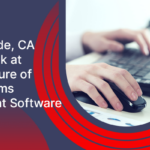How Claim Management Companies Can Enhance Their Practices
October 18, 2024
The widespread embrace of telehealth services has revolutionized healthcare accessibility, emphasizing convenience in virtual consultations. Amid this transformative shift, the spotlight turns to the essential role played by health insurance claims software in ensuring the seamless operation of telehealth systems. As this technology becomes the norm, its capabilities are crucial in addressing challenges and capitalizing on opportunities within the healthcare landscape. Health insurance claims software emerges as a linchpin, facilitating the integration of telehealth into existing frameworks. Its adaptability becomes paramount in streamlining processes, managing claims, and navigating the intricacies of remote medical interactions. In this dynamic era, where telehealth takes center stage, the intricate web of systems, particularly the agile health insurance claims software, proves instrumental in fostering a future where healthcare is not only accessible but also technologically empowered.
The Telehealth Revolution
The rapid rise of telehealth services finds its roots in a confluence of factors, notably accelerated by the COVID-19 pandemic, technological strides, and evolving patient preferences. This transformative shift provides unmatched convenience, eradicating the necessity for physical visits and dismantling barriers to healthcare access. Whether for routine check-ups or specialized consultations, patients now enjoy the flexibility of connecting with healthcare professionals seamlessly from the comfort of their homes. The pandemic catalyzed a paradigm shift in healthcare delivery, prompting the integration of virtual solutions as a mainstream alternative. Technological advancements not only facilitate remote interactions but also enhance the overall patient experience. In this era of heightened connectivity and changing healthcare dynamics, telehealth emerges as a pivotal force, offering a patient-centric approach that aligns with the evolving expectations of a digitally empowered society.
Challenges in Adapting Health Insurance Claims Software
The telehealth surge, though transformative, poses distinct challenges to healthcare infrastructure. Health insurance claims software, originally crafted for conventional healthcare settings, now requires evolution to seamlessly integrate the nuances of telehealth. The game-changing nature of telehealth necessitates a reevaluation and adaptation of existing systems to ensure the effective support of virtual healthcare operations. Here are some key challenges:
Integration with Telehealth Platforms:
- Telehealth services often operate on distinct platforms. For health insurance claims software to function seamlessly, integration with these platforms is essential.
- Compatibility issues may arise when attempting to synchronize data between telehealth systems and insurance claims software.
Data Security Concerns:
- Telehealth transactions involve sensitive patient information. Ensuring the security of data during transmission and storage becomes paramount.
- Health insurance claims software must be fortified to meet the stringent data protection standards required in the healthcare industry.
Real-time Processing:
- Traditional claims processing may not align with the instantaneous nature of telehealth consultations.
- Health insurance claims software needs to adapt to real-time processing requirements to facilitate prompt reimbursement for telehealth services.
Regulatory Compliance:
- The regulatory landscape governing telehealth is continually evolving. Health insurance claims software must stay abreast of these changes to ensure compliance and prevent legal complications.
Opportunities for Health Insurance Claims Software
Amidst the challenges, the telehealth surge also presents opportunities for innovation and enhancement of health insurance claims software:
Automation for Efficiency:
- Automation can streamline claims processing by reducing manual intervention. Health insurance claims software can leverage artificial intelligence and machine learning to automate routine tasks, expediting the reimbursement process.
Blockchain for Security:
- Blockchain technology holds promise in ensuring the security and integrity of telehealth data. By implementing blockchain in health insurance claims software, the industry can enhance transparency and reduce the risk of data breaches.
Interoperability Standards:
- Establishing interoperability standards is crucial for the seamless exchange of data between telehealth platforms and health insurance management. This can be achieved through collaborative efforts within the healthcare ecosystem.
Agile Development Practices:
- Adopting agile development practices enables health insurance management to respond swiftly to changing telehealth dynamics. Continuous improvement and regular updates are essential to meet evolving user requirements.
Enhanced Analytics for Decision Support:
- Health insurance claims software can leverage advanced analytics to provide insights into telehealth utilization patterns. This data can be instrumental in making informed decisions about coverage, pricing, and resource allocation.
Conclusion
As the telehealth revolution reshapes the healthcare landscape, health insurance claims software stands at the crossroads of adaptation and innovation. The challenges posed by the telehealth surge underscore the need for a flexible and dynamic approach to software development. By addressing integration issues, prioritizing data security, embracing automation, and staying abreast of regulatory changes, health insurance claims software can not only keep pace with the telehealth surge but also contribute to the efficiency and effectiveness of modern healthcare delivery.
In this era of transformative change, the collaboration between telehealth and health insurance claims software is essential for realizing the full potential of accessible, convenient, and secure healthcare services. As technology continues to evolve, the healthcare industry must remain agile, leveraging innovative solutions to meet the evolving needs of patients and providers alike.
7 Features Every Online Claim Management System Needs
June 27, 2024What to Look for in Claims Management Software?
May 8, 2024









